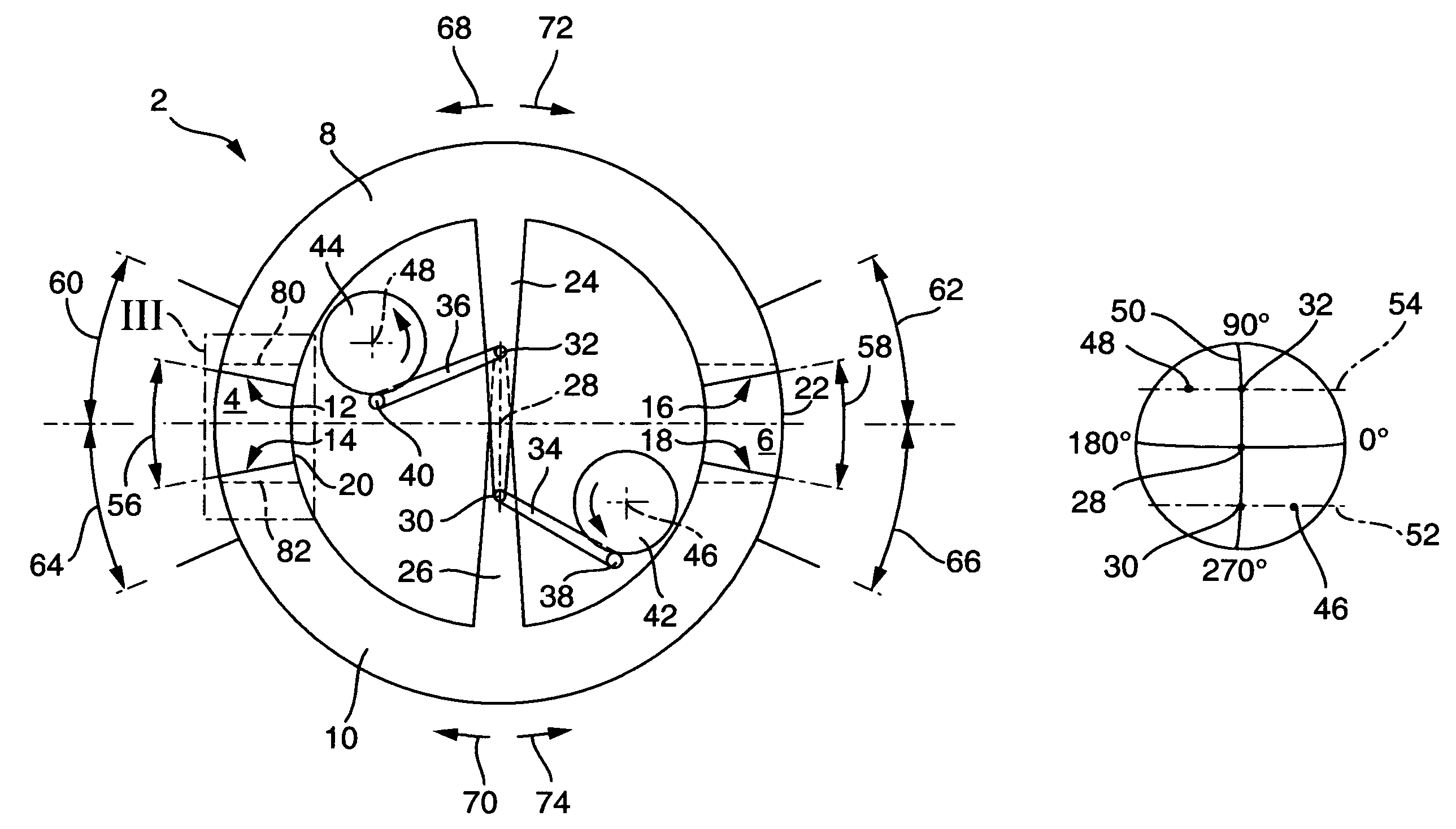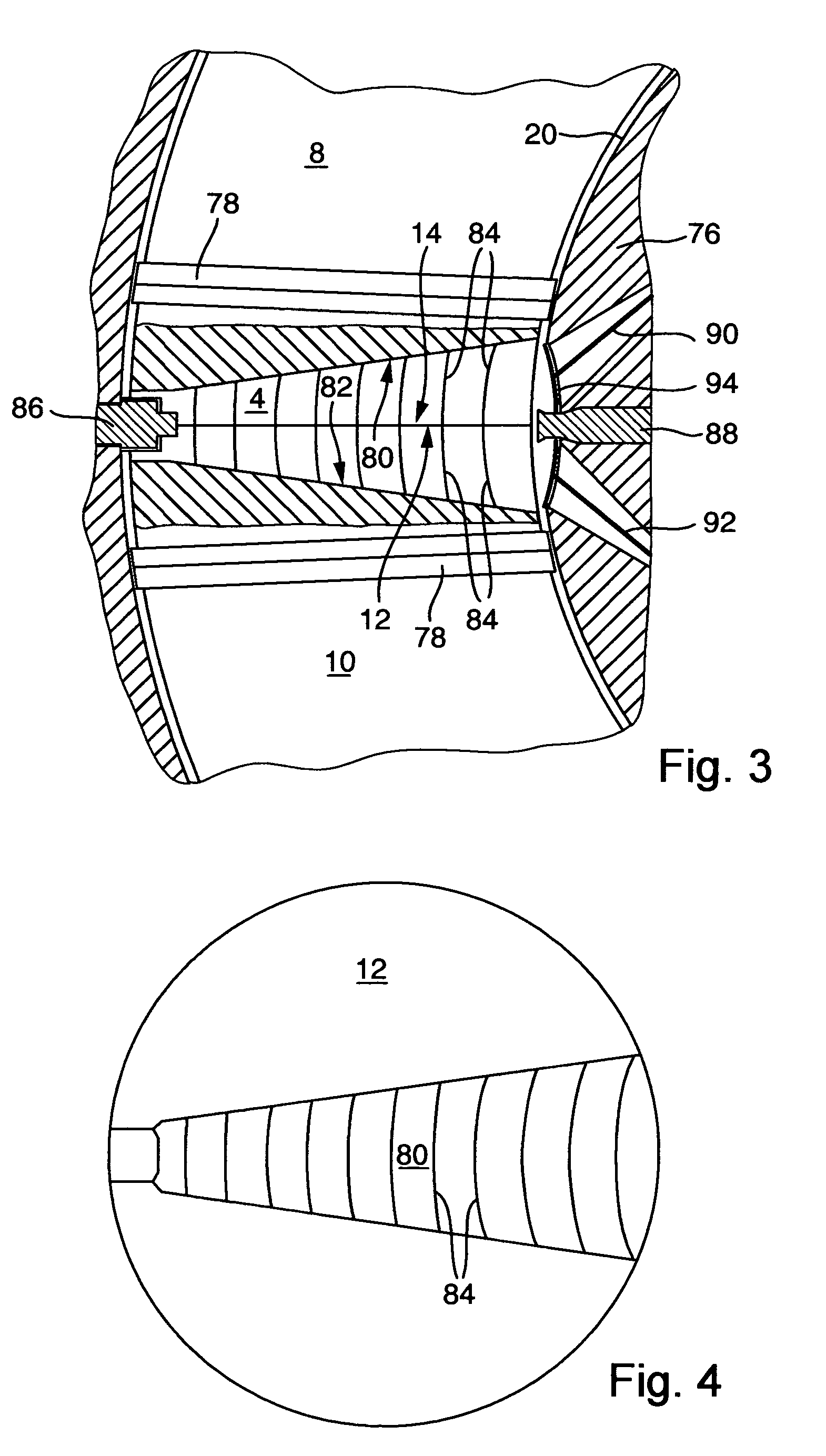Internal combustion engine
a combustion engine and internal combustion technology, applied in the direction of liquid fuel engines, machines/engines, rotary piston liquid engines, etc., can solve the problems of low efficiency of these engines, and achieve the effects of reducing the size of the engine, facilitating the operation of inventive internal combustion engines, and enhancing clean and efficient combustion
- Summary
- Abstract
- Description
- Claims
- Application Information
AI Technical Summary
Benefits of technology
Problems solved by technology
Method used
Image
Examples
Embodiment Construction
[0023]FIG. 1 shows the main parts of an inventive internal combustion engine 2. This engine comprises two combustion chambers, a first combustion chamber 4 and a second combustion chamber 6. A first piston 8 and a second piston 10 delimit each combustion chamber. The pistons 8 and 10 have a torus shape and each comprises two piston heads. The first piston 8 comprises a first piston head 12 and the second piston 10 comprises a second piston head 14, which is arranged opposite to the first piston head 12.
[0024]At its other end, the first piston 8 comprises a third piston head 16, which is arranged opposite to a fourth piston head 18, provided on the second piston 10.
[0025]The first combustion chamber 4 is not only delimited by the piston heads 12 and 14, but also by a first wall 20, which is provided by an engine housing (shown in greater detail in FIG. 3). The second combustion chamber 6 is accordingly delimited by a second wall 22. The walls 20 and 22 have the shape of a section of ...
PUM
 Login to View More
Login to View More Abstract
Description
Claims
Application Information
 Login to View More
Login to View More - R&D
- Intellectual Property
- Life Sciences
- Materials
- Tech Scout
- Unparalleled Data Quality
- Higher Quality Content
- 60% Fewer Hallucinations
Browse by: Latest US Patents, China's latest patents, Technical Efficacy Thesaurus, Application Domain, Technology Topic, Popular Technical Reports.
© 2025 PatSnap. All rights reserved.Legal|Privacy policy|Modern Slavery Act Transparency Statement|Sitemap|About US| Contact US: help@patsnap.com



